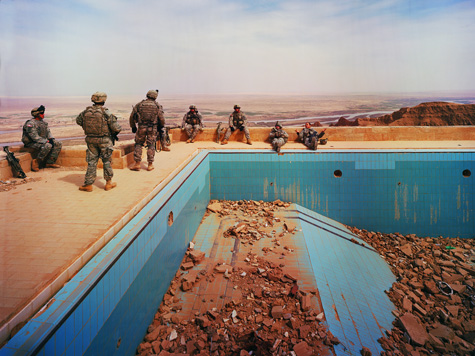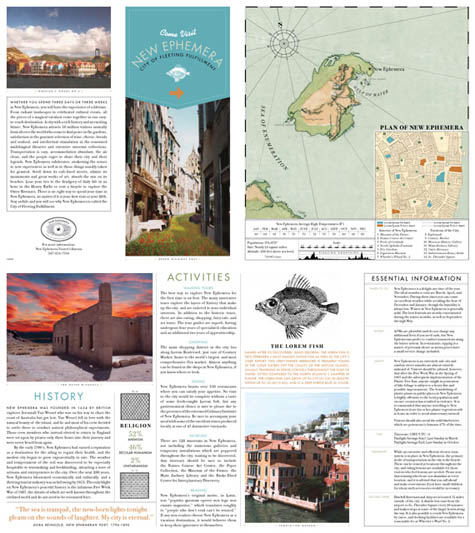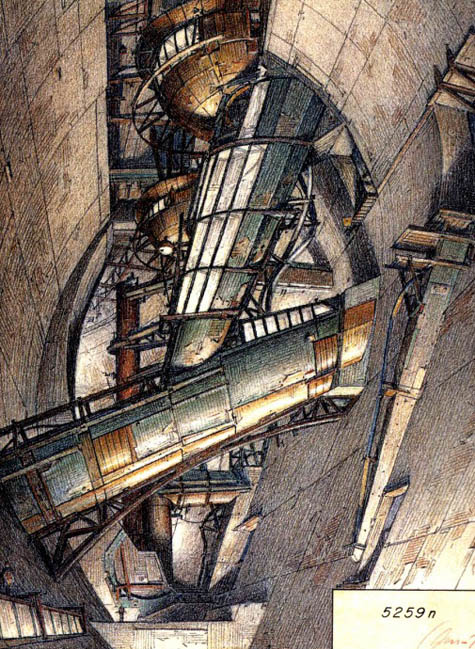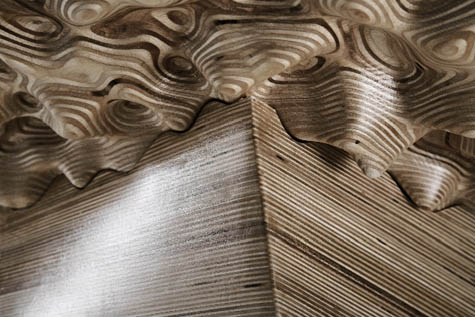 [Image: Yousef Al-Mehdari].
[Image: Yousef Al-Mehdari].
A few weeks ago I mentioned some 3D-printed work by Yousef Al-Mehdari, a student at the Bartlett School of Architecture. That work is now pictured here, in a proposal for a site on the island republic of Malta.
 [Image: Malta, just south of Sicily, in the exact center of the image].
[Image: Malta, just south of Sicily, in the exact center of the image].
The project explores religious ritual and the human body, alongside an interest in “transitory sculptures,” processional routes, and a kind of body-futurist rediscovery of architectural ornament. Vortices of limbs ossify into cathedrals; overlapping anatomies become windows and valves.
Al-Mehdari suggests that a careful – even mathematically exact – study of human bodily movement could serve as a basis for generating new types of architectural form. As if we could take conic sections through Merce Cunningham, say, and turn the resulting diagrams into churches.

 [Images: Yousef Al-Mehdari].
[Images: Yousef Al-Mehdari].
It’s the Visible Human Project as building typology: Vesalius meets Vitruvius in an era of computed tomography and RHINO.
 [Images: The Visible Human Project].
[Images: The Visible Human Project].
The use of the human body as a generator for architectural ornament reminds me, in an admittedly tangential way, of the “cadaver cathedral” by Jeff VanderMeer – the description of which is worth quoting in full:
Where the sculptures of saints would have been set into the walls, there were instead bodies laid into clear capsules, the white, white skin glistening in the light – row upon row of bodies in the walls, the proliferation of walls. The columns, which rose and arched in bunches of five or six together, were not true columns, but instead highways for blood and other substances: giant red, green, blue, and clear tubes that coursed through the cathedral like arteries. Above, shot through with track lighting from behind, what at first resembled stained-glass windows showing some abstract scene were revealed as clear glass within which organs had been stored: yellow livers, red hearts, pale arms, white eyeballs, rosaries of nerves disembodied from their host.
In any case, what’s also interesting in Al-Mehdari’s proposal is that this seems to be pitched more as a scooping-out, or milling, of the inside of an existing building. The main chapel and nave of a church on Malta are simply scraped, shaved, and replaced with Al-Mehdari’s bodycode-geometry.
 [Images: Yousef Al-Mehdari].
[Images: Yousef Al-Mehdari].
This further implies, however, that this project might be materially realizable in stone. The ongoing and obvious, but nonetheless absurdly under-discussed problem with today’s architectural interest in NURBs, algorithms, Voronoi tiling, parametric rhizo-phylo-archi-bio-futuro-spatiality and so on is that, yes, we can render vast and sprawling webs that consume whole cities, crawling across roofs and down streets through well-drawn tendons, arches, and amorphous sci-fi musculatures – but if all of it then gets built out of pink metal or red auto-painted aluminum that lasts for less than ten months in the wind, rain, and sun, then no matter how much your renderings might look like Tomorrowland, within weeks everything you’ve built will be indistinguishable from photo-degraded ruins of the early 1970s.
That is, no one is talking about weathering. And it’s not a trivial exercise, I would suggest, to imagine, for instance, Zaha Hadid’s collected built works re-realized in sandstone: not because this is an earnest material suggestion for Hadid, but because, as a thought-exercise, such alternatives might help architects to realize that their designs could be better served by the use of other materials.
All of which is a long way of saying that, to construct a new church of anatomical horror and to do so out of stone, as Al-Mehdari seems to be suggesting, is a fascinating idea.
And it’s a spatial idea that he explores through multiple incarnations of the resulting structure; Al-Mehdari’s obvious facility with a 3D printer makes these illustrations of the idea quite exciting.


 [Images: Yousef Al-Mehdari].
[Images: Yousef Al-Mehdari].
It’s also a seriously interesting question: could we hook up milling machines to the existing interiors of cathedrals all over the world and reshape them, in situ, without adding a thing – simply installing new insides through abrasion?
Geometrically unprecedented statuary emerges from the vaults of Chartres. Westminster Abbey is reduced through bandsaws to a superterranean catacomb of interlaced saints.
The following minor structural unit, meanwhile, seems more like a prized fossil found in the mountains of western China than an architectural building-block for a Mediterranean religious site.
 [Image: Yousef Al-Mehdari].
[Image: Yousef Al-Mehdari].
And the final two images here are more like nautiloids taken from the abyssal plains – bio-spatial artifacts with benthic resonance, we might say, like something Philip Beesley might use if he was hired to design an artificial reef.

 [Images: Yousef Al-Mehdari; it’s Jacques Cousteau with a 3D printer, by way of Leviathan and Mike Mignola].
[Images: Yousef Al-Mehdari; it’s Jacques Cousteau with a 3D printer, by way of Leviathan and Mike Mignola].
Al-Mehdari’s models and diagrams are more interesting than my own speculations, however. They will also be on display next month in London, alongside work by another student from the Bartlett, Yaojen Chuang; that exhibition kicks off on October 5th at the dreamspace gallery.

 [Images: M.A.P. by David Garcia].
[Images: M.A.P. by David Garcia]. [Image: M.A.P. by David Garcia].
[Image: M.A.P. by David Garcia]. [Image: The wastewater treatment plant at
[Image: The wastewater treatment plant at  [Image: A wastewater treatment plant in Macao, via
[Image: A wastewater treatment plant in Macao, via  [Image: New York’s
[Image: New York’s  [Image: Quarantine facility and hospital ward on
[Image: Quarantine facility and hospital ward on  [Image: U.S. “Federal and State Isolation and Quarantine Authority,” updated January 18, 2005].
[Image: U.S. “Federal and State Isolation and Quarantine Authority,” updated January 18, 2005]. [Image:
[Image: 
 [Image:
[Image:  [Image:
[Image:  [Image:
[Image:  [Image:
[Image:  [Image:
[Image:  [Image: The
[Image: The  [Image: Brains].
[Image: Brains]. [Image: Yousef Al-Mehdari].
[Image: Yousef Al-Mehdari]. [Image: Malta, just south of Sicily, in the exact center of the image].
[Image: Malta, just south of Sicily, in the exact center of the image].
 [Images: Yousef Al-Mehdari].
[Images: Yousef Al-Mehdari]. [Images: The
[Images: The  [Images: Yousef Al-Mehdari].
[Images: Yousef Al-Mehdari].

 [Images: Yousef Al-Mehdari].
[Images: Yousef Al-Mehdari]. [Image: Yousef Al-Mehdari].
[Image: Yousef Al-Mehdari].
 [Images: Yousef Al-Mehdari; it’s
[Images: Yousef Al-Mehdari; it’s  [Image: By Daniel Dendra of
[Image: By Daniel Dendra of  [Image: By Daniel Dendra of
[Image: By Daniel Dendra of 
 [Images: By Daniel Dendra of
[Images: By Daniel Dendra of  [Image: The Mix House by
[Image: The Mix House by 
 [Image: From
[Image: From  [Image: From
[Image: From  [Image: Matsys’s
[Image: Matsys’s  [Image: “
[Image: “